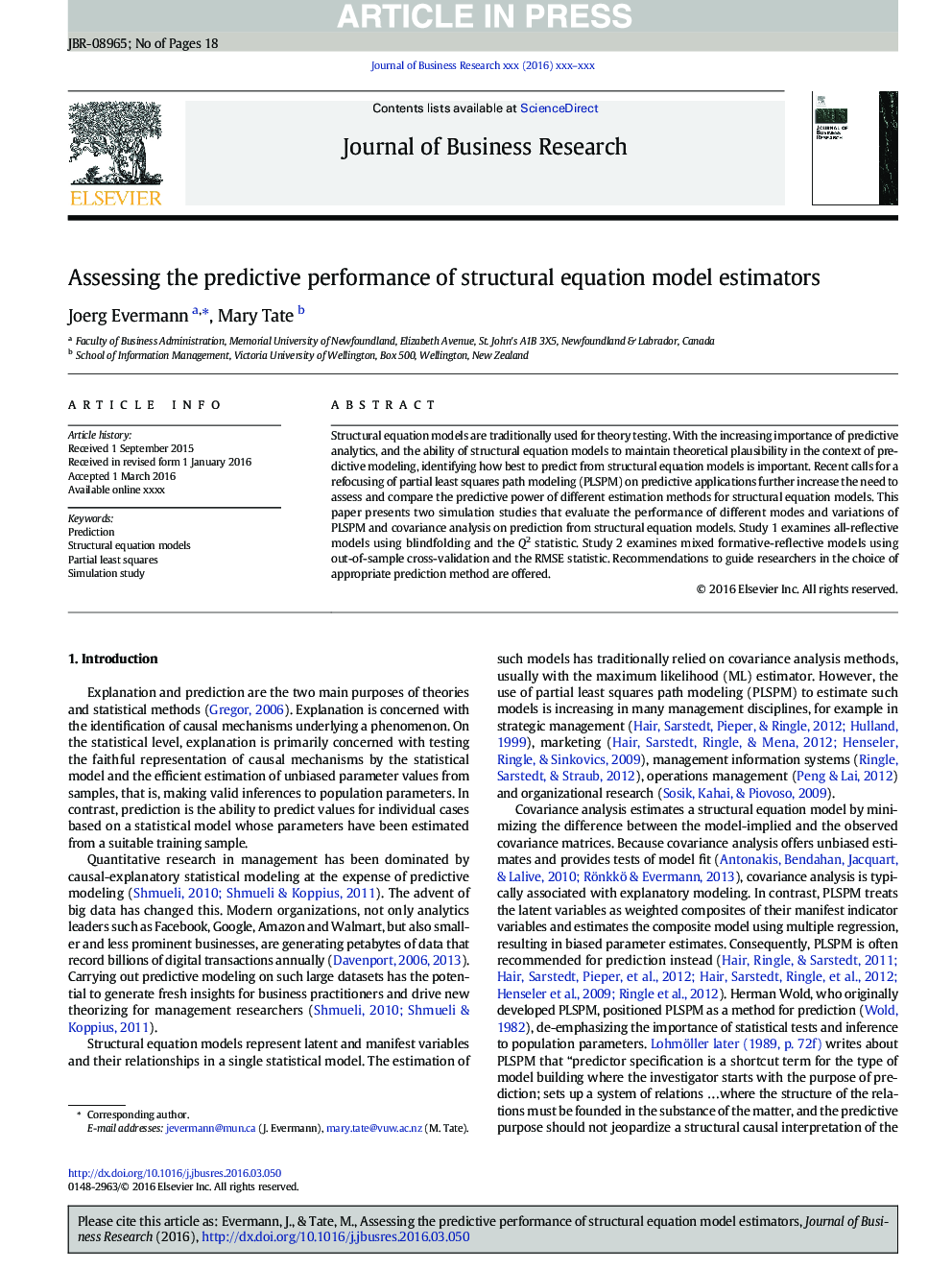| Article ID | Journal | Published Year | Pages | File Type |
|---|---|---|---|---|
| 5109912 | Journal of Business Research | 2016 | 18 Pages |
Abstract
Structural equation models are traditionally used for theory testing. With the increasing importance of predictive analytics, and the ability of structural equation models to maintain theoretical plausibility in the context of predictive modeling, identifying how best to predict from structural equation models is important. Recent calls for a refocusing of partial least squares path modeling (PLSPM) on predictive applications further increase the need to assess and compare the predictive power of different estimation methods for structural equation models. This paper presents two simulation studies that evaluate the performance of different modes and variations of PLSPM and covariance analysis on prediction from structural equation models. Study 1 examines all-reflective models using blindfolding and the Q2 statistic. Study 2 examines mixed formative-reflective models using out-of-sample cross-validation and the RMSE statistic. Recommendations to guide researchers in the choice of appropriate prediction method are offered.
Related Topics
Social Sciences and Humanities
Business, Management and Accounting
Business and International Management
Authors
Joerg Evermann, Mary Tate,
